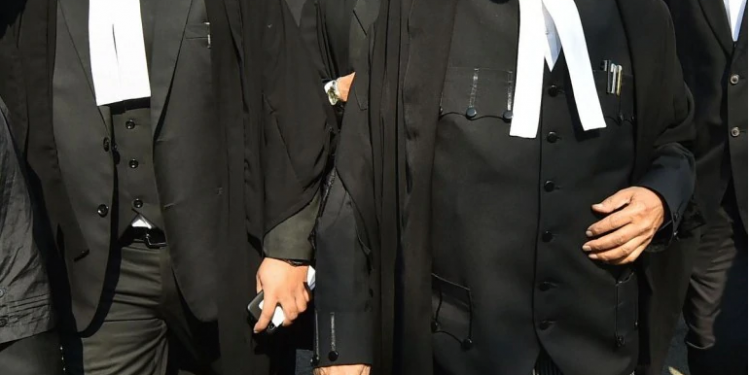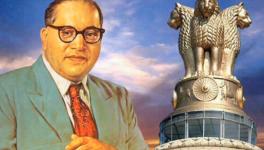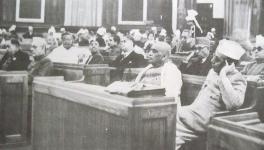Indian Legal Profession has Undergone a Sea Change Since 1774

The Indian legal profession is one of the largest in the world with more than 1 million enrolled advocates. A structured legal profession that came into existence during British rule has undergone a massive transformation after Independence. AFREEN ALAM gives a compendious introduction to the beginning and the evolution of the legal profession in the country
—–
From allowing only English and Irish barristers in the Supreme Court of Judicature, Calcutta, in 1774 to providing a fund to make an ex gratia grant to an advocate, in case, of a serious illness in 2001, the Indian legal profession has witnessed a sea change.
The Regulating Act of 1773, which set up a Supreme Court at Fort William, Calcutta, laid the first brick of a structured legal profession in the country.
Early developments
Clause 11 of the Charter of 1774 empowered the Supreme Court “to approve, admit and enrol such and so many advocates and attorneys at law” as it thought proper and also to remove them due to reasonable causes.
No other person could appear, plead or act in the court or on behalf of any party except English and Irish barristers and members of the faculty of advocates in Scotland or British attorneys. No Indian advocate was allowed in the court.
However, local vakils in the Company’s courts in mofussils continued to work. But there was no proper organisation or code for these lawyers till Lord Cornwallis in 1793 authorised the Sadr Diwani Adalat to enrol pleaders for the Company’s courts in Bengal, Bihar and Orissa. Regulation VII also fixed the scale of fees.
Also read: Shadow of Cornwallis on Indian Legal System
Later, the Charter Act of 1833 empowered the Sadr Diwani Adalat to enrol any qualified person as a pleader irrespective of his nationality or religion. In 1846, the Legal Practitioners Act allowed a person certified by the Sadr Diwani Adalat as having good character and duly qualified to become a pleader.
Barristers and pleaders authorised to appear in Sadr Diwani Adalat were permitted to enter into agreements with clients for their fees. Subsequently, the Legal Practitioners Act, 1853, allowed barristers and attorneys to appear before any Company court.
Clause 9 of the Letters Patent of 1865, which established the High Court in Calcutta, authorised “to approve, admit and enrol such and so many advocates, vakils and attorneys as to the said High Court shall seem to meet”. They were entitled to appear and plead before the Court subject to rules and directions. Similar provisions were made for establishing the high courts in Bombay and Madras.
Legal Practitioners Act, 1879
Finally, in 1879 a comprehensive legislation to consolidate and amend the law relating to legal practitioners was passed. The Legal Practitioners Act gave vast powers to the high courts to enrol lawyers for different courts and initiate disciplinary proceedings against them. It authorised the high courts to make rules with the sanction of respective provincial governments concerning qualifications and admission of suitable persons as advocates and vakils.
A high court was authorised to make rules with respect to qualifications and admissions of pleaders and mukhtars in subordinate courts and revenue offices. The pleader could practise in all subordinate courts while the mukhtar was allowed to appear only in criminal courts and, at some places, before revenue officers. The three chartered high courts added to the category of advocates, attorneys and vakils. The advocates and attorneys had studied law in England while the vakils were Indian law graduates.
After the rules of Bombay and Madras high courts were amended, law graduates could become advocates after passing a prescribed exam. While an advocate could appear on these high courts’ original and appellate side, the vakil could not appear on the original side or even in appeals by the original side. The Madras High Court was the first to remove this distinction in 1886.
The Act of 1879 permitted an advocate or a vakil on the roll of any high court to plead in any subordinate court and before any high court with that court’s permission. The attorneys were also permitted to practise in any subordinate court and high court other than the one in which they were enrolled. This enlarged the work area of the advocates, vakils and attorneys and provided them more mobility.
Indian Bar Councils Act, 1926
The dissatisfaction over the distinction between vakils and advocates regarding an appearance on the original side of the chartered high courts, some privileges enjoyed by British barristers and the demand for an all-India Bar led to the appointment of the Indian Bar Committee under Sir Edward Chamier in 1923. To implement the recommendations of the committee, the Indian Bar Councils Act, 1926, was enacted.
The most significant change brought by this Act was the establishment of a Bar Council for each high court consisting of 15 members, including the advocate general as an ex officio member. Each Bar Council had an elected chairman and vice-chairman.
In the high courts of Madras, Calcutta and Bombay, the advocate general was the ex officio chairman of the Bar Council. It was mandatory to maintain a roll of all practitioners enrolled under a high court.
With the sanction of the court, the Bar Council was empowered to make rules and regulations regarding the admission of advocates, prescribing their qualifications, duties, rights, norms of discipline and professional conduct, providing complete legal education and training and conducting examinations.
A Bar Council had the power to initiate disciplinary proceedings against a practitioner on a reference from a high court. The Council conducted the proceedings according to the rules framed by the high court, which passed orders. The Act also provided for a specific rule for every Bar Council that a woman shall not be disqualified from being an advocate on grounds of sex alone.
Advocates Act, 1961
The All India Bar Committee, 1951, recommended the creation of an All India Bar Council with a common roll for all advocates and also Bar Councils for states with greater autonomy. These changes were also recommended by the 14th Law Commission of India Report on Reform of Judicial Administration, 1958, and subsequently, the Advocates Act, 1961, was passed. Its main features are as follows:
1) The establishment of an All-India Bar and a common roll of advocates with the right to practise in any court, including the Supreme Court, or part of the country;
2) The integration of the Bar into a single class of legal practitioners known as advocates. Before the commencement of this Act, there were different classes of legal practitioners— advocates, lawyers, solicitors, vakils, etc. This Act abolished all the classes and the legal practitioners henceforth were to be known as advocates;
3) The prescription of a uniform qualification for admission of advocates;
4) The division of advocates into senior and other categories would be based on merit. The status of a senior advocate would be granted by the High Court or the Supreme Court with the advocate’s consent;
5) The creation of an autonomous Bar Council—one for the whole of India and one for each state. The Act organised the legal profession on federal lines;
6) An advocate would initially be enrolled with the State Bar Council, and a common roll of all advocates in the country would be maintained by the Bar Council of India. No advocate could get enrolled with more than one state Bar Council but they could be transferred from one Council to another and would be entitled to appear before any court or tribunal in the country.
State Bar Councils
The State Bar Councils are named after the states though some are common to two or more states. In some cases, the Union Territories are also covered by a State Bar Council. Delhi has a separate Bar Council. The State Bar Council consists of 15-25 members elected from among advocates on the electoral roll of that Bar Council. The advocate general of the State concerned and Additional Solicitor General of India, as in the case of Delhi Bar Council, are ex officio members of the Council. Every State Bar Council elects a chairman and a vice-chairman for a fixed term of five years.
Bar Council of India
The Bar Council of India comprises the Attorney General of India, the Solicitor General and one member elected from each State Bar Council from among its members. The members of the State Bar Councils, elected for five years, select the chairman and vice-chairman of the Council.
The Advocates Welfare Fund Act, 2001, makes provisions for the creation of a fund to make an ex gratia grant to a member, in case, of a serious illness; payment of a fixed amount on cessation of practice and, in case, of death to his/her nominee or legal heir; medical and educational facilities for members and their dependents and purchase of books for common facilities for advocates.
(Afreen Alam is a Delhi-based researcher and writer. She is a final-year law student at Jamia Millia Islamia, Delhi. The views expressed are personal.)
Get the latest reports & analysis with people's perspective on Protests, movements & deep analytical videos, discussions of the current affairs in your Telegram app. Subscribe to NewsClick's Telegram channel & get Real-Time updates on stories, as they get published on our website.
























